ikfoundation.org
The IK Foundation
Promoting Natural & Cultural History
Since 1988




Home > Field Station | Naturae Observatio > Aurorae & Oort-Cloud Comets
How to cite & Creative Commons

SCIENTIFIC RESEARCH PROJECTS
| AURORAE & OORT-CLOUD COMETS

AURORAE & OORT-CLOUD COMETS PROJECTS
LUND OBSERVATORY AT LUND UNIVERSITY & KJELL HENRIKSEN OBSERVATORY
(UNIS)
LUND OBSERVATORY AT LUND UNIVERSITY & KJELL HENRIKSEN OBSERVATORY
(UNIS)
- PROJECT TITLE 1: MONITORING OF AURORAE
- ESTIMATED START-UP TIME: Autumn 2018
- GEOGRAPHICAL RESEARCH / MONITORING AREA: Area C and above.
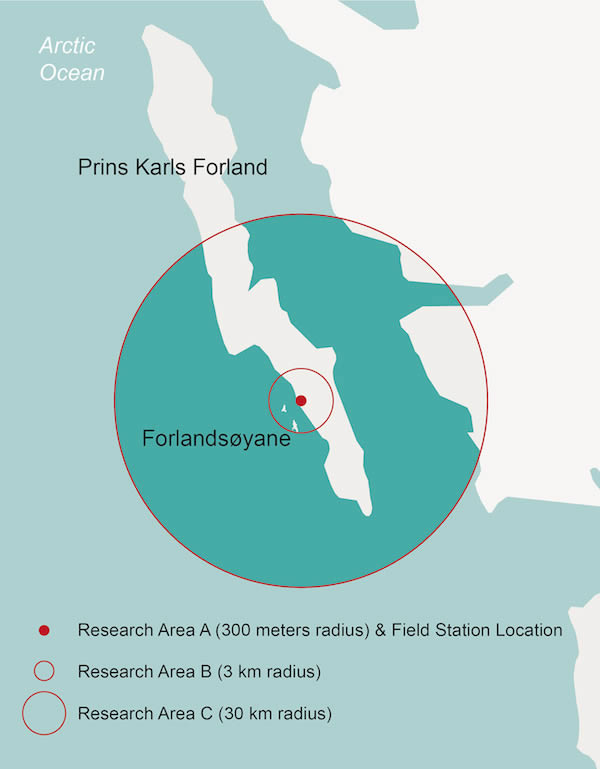
ABSTRACT
 It is proposed to monitor aurorae from a site on the west coast of Prins Karls Forland, opposite to Forlandsøyane. While the excellent conditions for such observations on Svalbard have long been successfully exploited by the researchers of the Kjell Henriksen Observatory (KHO), we propose to provide support data in close consultation with KHO staff. This has been discussed with the KHO directorate.
It is proposed to monitor aurorae from a site on the west coast of Prins Karls Forland, opposite to Forlandsøyane. While the excellent conditions for such observations on Svalbard have long been successfully exploited by the researchers of the Kjell Henriksen Observatory (KHO), we propose to provide support data in close consultation with KHO staff. This has been discussed with the KHO directorate.
INTRODUCTION
 Aurorae are high-latitude, positive or negative, natural phenomena with prime visibility in the winter periods of Arctic and Antarctic regions. Aurorae occur as a result of interaction between the solar wind and the shielding space surrounding Earth and its atmosphere, the magnetosphere. The solar wind is a high-speed and high-energy flow of charged particles, mainly electrons, protons and alpha particles, or helium-4 nuclei, released from the hot solar corona. The magnetosphere contains charged particles under the control of Earth’s magnetic field.
Aurorae are high-latitude, positive or negative, natural phenomena with prime visibility in the winter periods of Arctic and Antarctic regions. Aurorae occur as a result of interaction between the solar wind and the shielding space surrounding Earth and its atmosphere, the magnetosphere. The solar wind is a high-speed and high-energy flow of charged particles, mainly electrons, protons and alpha particles, or helium-4 nuclei, released from the hot solar corona. The magnetosphere contains charged particles under the control of Earth’s magnetic field.When the magnetosphere is significantly affected by the solar wind, charged particles in the solar wind and the magnetospheric plasma are precipitated into the higher parts of Earth’s atmosphere. Here, the added energy serves to excite constituents of the atmosphere, resulting in ionisation. This can be observed as light emitted in a variety of forms and colours. The structures of the phenomena vary in space and time, often highly spectacularly. These processes predominately take place around 100 – 150 km above ground. Sometimes though, they can reach significantly larger intervals in altitude, especially so in terms of high-altitude spurs of energy.
Many types of aurorae have been observed and partly studied. Still, more observational data and data series are required for improved understanding. When we now plan for installation of a Field Station in the coastal region of Prins Karls Forland, we propose to install an all-sky camera for monitoring of aurorae as a complement to and support for the more diverse observations of aurorae performed at the KHO, analysis to be made under KHO supervision.
AIM OF STUDY PROPOSED
 The aim of the current proposal is to complement the aurora observations performed by KHO researchers. A two-station approach has a number of advantages. First, it will increase the effective observing time, as weather conditions, and not least cloud cover, tend to vary significantly depending on observing site as well as time. The KHO site and the site proposed for our Field Station will, together, benefit from more clear skies than each of them alone. Second, two aurora observing sites as proposed will offer excellent conditions for application of triangulation, thus improving a number of observational parameters.
The aim of the current proposal is to complement the aurora observations performed by KHO researchers. A two-station approach has a number of advantages. First, it will increase the effective observing time, as weather conditions, and not least cloud cover, tend to vary significantly depending on observing site as well as time. The KHO site and the site proposed for our Field Station will, together, benefit from more clear skies than each of them alone. Second, two aurora observing sites as proposed will offer excellent conditions for application of triangulation, thus improving a number of observational parameters.
APPROACH OF STUDY
 For the study, we intend to use a camera mounted on top of our Field Station structure. We refer to a full-sky high-quality camera with an objective in the form of a so-called fish-eye lens. The camera intended has a light-collection power and a spatial resolution both ideal for our purpose. Field distortions are minimised and they can be overcome with dedicated correction programmes. Final choice of the camera and its support programmes will be made in close consultation with KHO staff.
For the study, we intend to use a camera mounted on top of our Field Station structure. We refer to a full-sky high-quality camera with an objective in the form of a so-called fish-eye lens. The camera intended has a light-collection power and a spatial resolution both ideal for our purpose. Field distortions are minimised and they can be overcome with dedicated correction programmes. Final choice of the camera and its support programmes will be made in close consultation with KHO staff.Observing frequency and time resolution as well as variation of these parameters will be chosen for optimum support of the corresponding data collected at the KHO. This will also concern data storage, availability and transfer. Further, quality assurance will be coordinated with corresponding measures by KHO researchers.
The aurora monitoring on our Field Station will be performed in parallel with meteorological observations. The latter observations will be conducted as part of the Svalbard network of meteorological stations under the supervision of Norsk Meteorologisk Institutt. Instruments will be measuring temperature, relative humidity, local pressure, wind speed and wind direction as well as precipitation.
REFERENCES
- We refer to the Kjell Henriksen Observatory, its staff and extensive research reports.
SUMMARY
 With an autonomously functioning Field Station operating in the coastal region of Prins Karls Forland, favourable basic conditions are provided for monitoring of auroral events and processes. These conditions have long been very successfully used by the KHO. With an auroral camera installed on our Field Station, valuable support can be provided. This has been discussed with the KHO directorate.
With an autonomously functioning Field Station operating in the coastal region of Prins Karls Forland, favourable basic conditions are provided for monitoring of auroral events and processes. These conditions have long been very successfully used by the KHO. With an auroral camera installed on our Field Station, valuable support can be provided. This has been discussed with the KHO directorate.
SPECIFICATION OF TECHNICAL EQUIPMENT REQUIRED
 We require an all-sky camera with special mount, electronic and electrical connector cables and a set of software dedicated to our purpose. Adequate supply of power will be provided as detailed under special heading.
We require an all-sky camera with special mount, electronic and electrical connector cables and a set of software dedicated to our purpose. Adequate supply of power will be provided as detailed under special heading.
PARTICIPATING ORGANISATIONS
- Organisation of the support observations will be made from Lund Observatory, Department of Astronomy and Theoretical Physics, Lund University, in consultancy with KHO staff.
- Fred Sigernes, UNIS Aurora Observatory: The Kjell Henriksen Observatory (KHO). Longyearbyen, Svalbard.
WEBSITE
 www.astro.lu.se
www.astro.lu.se
PROJECT MANAGER
 Arne Ardeberg, Lund Observatory, P O Box 43, SE-221 00 Lund, Sweden.
Arne Ardeberg, Lund Observatory, P O Box 43, SE-221 00 Lund, Sweden.
AURORAE & OORT-CLOUD COMETS PROJECTS
LUND OBSERVATORY AT LUND UNIVERSITY & KJELL HENRIKSEN OBSERVATORY
(UNIS)
LUND OBSERVATORY AT LUND UNIVERSITY & KJELL HENRIKSEN OBSERVATORY
(UNIS)
- PROJECT TITLE 2: SURVEY FOR OORT-CLOUD COMETS
- ESTIMATED START-UP TIME: Autumn 2018
- GEOGRAPHICAL RESEARCH / MONITORING AREA: Area C and above.

ABSTRACT
 We propose to survey the northern sky for new long-period comets from the west coast of Prins Karls Forland. Comets are objects of high scientific interest but poorly understood. Part of the interest in comets concerns their role as providers of material enabling evolution of life on Earth. Scarce detailed observations limit our conclusions. Important is monitoring of comets over extended periods with our best telescopes and instruments. This requires early identification of comets, not least long-period comets. A survey is an efficient solution. The site proposed is ideal for the purpose. Equipment needed is available.
We propose to survey the northern sky for new long-period comets from the west coast of Prins Karls Forland. Comets are objects of high scientific interest but poorly understood. Part of the interest in comets concerns their role as providers of material enabling evolution of life on Earth. Scarce detailed observations limit our conclusions. Important is monitoring of comets over extended periods with our best telescopes and instruments. This requires early identification of comets, not least long-period comets. A survey is an efficient solution. The site proposed is ideal for the purpose. Equipment needed is available.
INTRODUCTION
 Approaching the Sun, comets heat up. Volatile materials vaporise and stream out from the nuclei. Escaping gases push out substantial amounts of dust from the interior of the nuclei to its surface and beyond. The comet develops a gas shell around its nucleus. This shell, the coma, is normally much larger than the nucleus. Comets have been observed with comas several times larger than Earth. Reaching the nucleus outer parts, the escaping gas mixes with the dust it brings along.
Approaching the Sun, comets heat up. Volatile materials vaporise and stream out from the nuclei. Escaping gases push out substantial amounts of dust from the interior of the nuclei to its surface and beyond. The comet develops a gas shell around its nucleus. This shell, the coma, is normally much larger than the nucleus. Comets have been observed with comas several times larger than Earth. Reaching the nucleus outer parts, the escaping gas mixes with the dust it brings along.Often, comas show tails, normally two. One is composed of gases, forced out from the coma by the solar wind in a direction opposite to that of the Sun. Escaped from the coma, gas tails tend to follow magnetic field lines. The other tail is composed of dust. It is much less affected by the solar wind than is the gas tail. The dust tail draws behind the nucleus, deviating towards its orbit, in a curved trajectory. The two tails separate gas from dust and extend at an angle to each other. Both are fluffy features that can extend tens of millions of kilometres. This is especially true concerning the gas tails. Still, gas tails can remain spectacular over extended areas and periods.
Comets sometimes seem to have three tails. The third tail, the antitail, is normally much less spectacular than the gas and dust tails. The antitail seems to advance towards the Sun. This is, however, an optical illusion. The antitail is composed of dust particles heavier than those forming the dust tail. This dust is much less affected by solar radiation pressure than the dust tail. Antitail dust remains largely in the comet’s orbital plane. It forms a disc-like structure. If Earth passes through the comet’s orbital plane, the dust disc is viewed side-on. Its brightness is raised and it is seen as a spike. Once Earth has left the comet’s orbital plane, the antitail illusion is lost.
Cometary nuclei can show bright jets. When heated, gases in the nucleus expand and escape through the surface. The gas carries along significant amounts of dust. When such out-streaming gains momentum, it can very much affect the nucleus. It can force it to start spinning. The nucleus may even be torn apart.
AIM OF STUDY PROPOSED
 Comets and Life on Earth
Comets and Life on EarthWe propose a survey for Oort-Cloud comets, objects seen as potential origins of terrestrial water and, thus, a necessary precursor to life on Earth. In addition, in many comets, organic molecules have been identified, including polycyclic aromatic hydrocarbons, argued as providers of material for the earliest forms of life. Also, it has been proposed that violent cometary impacts, involving rocks and ice, formed amino acids, creating proteins via shock synthesis.
Significant amounts of molecular oxygen have been proposed as part of cometary nuclei, identification claimed in the outgassing of comet 67P. If confirmed for other comets, we may conclude that molecular oxygen can be more abundant than so far supposed. If so, these molecules may be less useful as life indicators than currently thought. The comet properties discussed make them important research objects. However, they are challenging observing targets. They can be adequately studied only in the inner part of the solar system. Here, their visits are of short duration. Adequate studies require preparations and, thus, early announcement of arrivals. Our aim is to deliver such information.
 Two Main Types of Comets
Two Main Types of CometsComets are of two main types, short-period and long-period comets. The majority are short-period, some with periods shorter than 20 years, all with periods shorter than 200 years. Long-period comets only exceptionally have orbital periods around 200 years. Most of them have periods of thousands of years or more.
Short-period comets have eccentricities large enough to allow rapid visits to the inner part of the solar system but small enough to maintain them in the observable part of the system. Long-period comets have large or very large eccentricities. Aphelion distances up to 70 000 astronomical units have been observed.
 Origins of Comets
Origins of CometsShort-period comets have their origin in the outer observable part of the solar system. They are identified with the small-body Centaurs and the scattered Kuiper belt disc, the latter a trans-Neptunian disc of solar-system matter. Long-period comets have their origins far beyond the Kuiper belt, at distances escaping observational efforts.
 Oort and Hill Clouds
Oort and Hill CloudsLong-period comets are often called Oort-cloud comets as their origins are identified with the Oort cloud, an extended cloud of the matter originally forming the Sun and planets. This matter, including its comets, is still practically pristine with only marginal signs of evolution. The distance of the Oort cloud from the Sun is between 50 000 and 200 000 astronomical units. The Oort cloud may be divided into a spherical outer Oort cloud and an inner cloud roughly doughnut shaped, the latter called the Hill cloud.
 Inclination of Orbit
Inclination of OrbitShort-period and long-period comets have different orbital inclinations relative to the plane of the ecliptic. Short-period comets have small orbital inclinations. They normally orbit close to the plane of the ecliptic and in the same direction as the planets, although exceptions exist. Long-period comets have orbits spread out over the full range of inclinations. Thus, short-period comets are not only observed much more frequently than long-period comets, their appearances are also much easier to predict and confirm. The observational challenge of long-period comets is the by far largest one.
 High-Latitude Advantages
High-Latitude AdvantagesShort-period comets are easiest to predict and identify. However, they orbit close to the plane of the ecliptic and, thus, are often missed in this region of comparably close traffic of bodies of different sizes and luminosities. The same problem occurs for long-period comets with orbits in or close to the plane of the ecliptic. The higher their orbital inclinations are relative to the plane of the ecliptic, the easier they are to detect.
As the planes of the ecliptic and the equator are relatively close, high-latitude sites offer special advantages. Even more important, high-latitude sites offer similar advantages regarding the galactic plane. Long-period comets are the least known type of comets and also the comets most attractive for studies. We urgently need early identification of such comets. Svalbard sites are uncommonly attractive for surveys for these comets. The attractiveness of the sites is further pronounced, as they over an extended period of the year offer record dark night skies, a great advantage for early detection of comets, as such detections concern very faint objects.
APPROACH OF STUDY
 Tools for Investigation
Tools for InvestigationFor our survey for long-period comets, we will use a dedicated camera mounted on top of our Field Station. This camera is similar to the one intended for aurora studies. The comet camera is a full-sky high-quality fish-eye lens camera. It has a light-collection power and spatial resolution well matched to our observing programme. We intend to cover the full sky available for our survey. The survey is not very sensitive to effects of field distortion. With correction programmes prepared, we will correct distortion errors to the degree required for proper identification and location of comets.
The winter period will be the prime period for our survey of arriving comets. Still, we will be able to add a substantial quantity of observing time also in spring and autumn time.
 Observing Activity
Observing ActivityWith a fixed camera position towards the zenith we will cover a large part of the total sky, even if we discard the part of the field with lowest elevation angles. No hard-ware scanning is required. The survey can be accomplished with software scanning. We will use long exposure times enabling detection of arriving comets at an early stage. From initial test observations we will determine an optimum survey exposure time. This exposure time is the longest one not causing effects of sky-brightness saturation. It will depend on season and time difference between exposure and local midnight. With the dependence derived, we can for any survey exposure determine the optimum exposure time, taking into account the influence of moon light. Exposure time is a matter under safe control.
 Field Template
Field TemplateAs preparation for our survey exposures, we will obtain a series of field exposures covering the same part of the sky to be surveyed. We will repeat the preparatory exposures a small number of times at different seasons and during times free from influence of moon light. Each time, we will collect exposures of different length. Thus, we will obtain a small number of exposure series, each covering an adequate range of exposure length and sky brightness.
From our preparatory exposure series, we get templates for evaluation of our survey exposures. For any survey exposure, we can interpolate the corresponding sky field and brightness. Thus, we get, for every survey exposure, an adequate exposure to be used as a template. Final sky-brightness fitting and subsequent exposure subtraction will reveal any significant new comet.
 Treatment and Analysis of Survey Exposures
Treatment and Analysis of Survey ExposuresAfter completion of each survey exposure, evaluation will follow. With tailor-made software, the exposure will compared to the pre-selected template. Field subtraction will be followed by a scan for remaining significant features. The evaluation can be rapid and will not imply any significant loss of time for survey exposures. In case the feature detected fullfils the criteria for significance, it will be passed on to post-identification processing.
 Post-Identification Activity
Post-Identification ActivityFor any significant feature, right ascension and declination will be calculated. The feature will be given a preliminary designation. Designation and coordinates will be stored and reported to the central project computer. There, it will again be stored and reported globally. Post-identification actions will not influence the survey programme.
 Other Objects
Other ObjectsThe survey will, on occasions, show some objects in addition to new comets. When present, novae and supernovae will be shown. From a single exposure, these objects cannot be distinguished from comets. However, when exposures are repeated, comets will appear as moving objects, novae and supernovae as fixed features. All three classes of objects and their coordinates will be reported. Following first announcement and with further exposures and identifications available, correct object class can be reported. All three classes of objects are scientifically very interesting. Meteors are phenomena of too short duration and diluted traces to appear on our survey exposures.
 Some Conclusions
Some ConclusionsWith an autonomous Field Station in the coastal region of Prins Karls Forland, conditions are favourable for identification of new long-period comets as well as for novae and supernovae. The latitude implies several advantages. Field object contamination is low. General sky light is low, as is light produced by human settlements and activities. Air transparency is high. Human traffic, including air traffic, is absent or record low.
We have a camera with ideal performance. We have prepared software for all actions required, including identification, measurements and determination of significance as well as treatment of positive identification data. Observing equipment will be provided with electric and electronic connection equipment. The comet-survey camera will have free sky access.
Long-period comets are scientifically highly interesting. Their role regarding life on Earth is noted. Advancement concerning the role of comets require much more observations. Extended monitoring with sophisticated telescopes and instruments is required and can be performed given early announcement of cometary arrivals. This can be given with a survey programme running on an observing station on Prins Karls Forland. Such a programme is proposed. In addition, the survey will provide identification of novae and supernovae, other objects of high scientific interest.
REFERENCES
- Bibring, J.-P., Taylor, M. G. G. T., Alexander, C., Auster, U., Biele, J., Finzi, A. Ercoli, Goesmann, F., Klingehoefer, G., Kofman, W., Mottola, S., Seidenstiker, K. J., Spohn, T., Wright, I., 2015, Science 349, 493.
- Bieler, A., 2015, Nature 526, 678.
- Bieler, A., Altwegg, K., Balsiger, H., Bar-Nun, A., Berthelier, J.-J., 2015, Nature 526 678.
- Brown, Michael E., Kulkarni, Shrinivas R., Liggett, Timothy J., 1997, Astrophysical Journal 490, L119.
- Duncan, Martin J., 2008, Space Science Reviews 138, 109.
- Feldman, Paul D., A'Hearn, Michael F., Bertaux, Jean-Loup, Feaga, Lori M., Parker, Joel Wm., Schindhelm, Eric, Steiffl, Andrew J., Stern, S. Alan, Weaver, Harold A., Sierks, Holger, Vincent, Jean-Baptiste, 2015, Astronomy and Astrophysics 583, A8.
- Fernández, Yanga R., 2000, Earth, Moon, and Planets 89: 3.
- Fray, Nicolas, Bardyn, Anaïs, Cottin, Hervé, 2016, Nature 538, 72.
- Glassmeier, Karl-Heinz, Boehnhardt, Hermann, Koschny, Detlef, Kührt, Ekkehard, Richter, Ingo, 2007, Space Science Reviews 128, 1.
- Ishii, H. A., Bradley, J. P., Dai, Z. R., Chi, M., Kearsley, A. T., Burchell, M. J., Browning, N. D., Molster, F., 2008, Science 319, 447.
- Jewitt, David C., 2002, Astronomical Journal 123, 1039.
- Jewitt, David, Luu, Jane, Chen, Jun, 1996, Astronomical Journal 112, 1225.
- Küppers, Michael, O'Rourke, Laurence, Bockelée-Morvan, Dominique, Zakharov, Vladimir, Lee, Seungwon, von Allmen, Paul, Carry, Benoît, Teyssier, David, Marston, Anthony, Müller, Thomas, Crovisier, Jacques, Barucci, M. Antonietta, Moreno, Raphael, 2014, Nature 505, 525.
- Lallement, Rosine, Bertaux, Jean-Loup, Szegö, Karöly, Nemeth, Szilvia, 2002, Earth, Moon, and Planets 90, 67
- Harold F. Levison, Harold F, Dones, Luke, Duncan, Martin J., 2001. Astronomical Journal 121, 2253.
- Martins, Zita, Price, Mark C., Goldman, Nir, Sephton, Mark A., Burchell, Mark J., 2013, Nature Geoscience 6, 1045.
- Quirico, E., Moroz, L. V., Schmitt, B., 2016, Icarus 272, 32.
- Quirico, E., Moroz, L. V., Schmitt, B., Arnold, G., Faure, M., 2016, Icarus 272, 32.
- Thiemann, Wolfram H.-P., Meierhenrich, Uwe, 2001, Origins of Life and Evolution of the Biosphere 21, 199.
- Vincent, Jean-Baptiste, 2015, Nature 523, 63.
SPECIFICATION OF TECHNICAL EQUIPMENT REQUIRED
- We require an all-sky camera with special mount, electronic and electrical connector cables and a set of software dedicated to our survey programme. All this exists. Further, we need an adequate supply of power. The energy producing and storing equipment required, wind turbines, solar panels, a fuel cell and batteries, exist.
PARTICIPATING ORGANISATIONS
- Lund Observatory, Department of Astronomy and Theoretical Physics, Lund University.
WEBSITE
 www.astro.lu.se
www.astro.lu.se
PROJECT MANAGER
 Arne Ardeberg, Lund Observatory, P O Box 43, SE-221 00 Lund, Sweden.
Arne Ardeberg, Lund Observatory, P O Box 43, SE-221 00 Lund, Sweden.FIELD
STATION
NATURAE OBSERVATIO
The IK Foundation has taken the initiative to develop the next generation of scientific Field Stations. The work with FIELD STATION | NATURAE OBSERVATIO is a long-term project, a practical and theoretical enterprise - and part of the BRIDGE BUILDER EXPEDITIONS - aiming to establish eco-designed autonomous Field Stations, which unattended during night and day, all year-round will observe a selected landscape and its life.
The observations - as well as the designs and structures of stations vary – but is always an interdisciplinary resource to document nature and the environment during a predetermined period of time between one to three years.
For regular updates, we recommend fellowship by subscribing to our monthly newsletter iMESSENGER.
The observations - as well as the designs and structures of stations vary – but is always an interdisciplinary resource to document nature and the environment during a predetermined period of time between one to three years.
For regular updates, we recommend fellowship by subscribing to our monthly newsletter iMESSENGER.
PATRONAGE
This site/project
has been made globally available in collaboration with:
 Feel welcome to read more about how to take part...
Feel welcome to read more about how to take part...
 Feel welcome to read more about how to take part...
Feel welcome to read more about how to take part...
LINKS | FURTHER READING

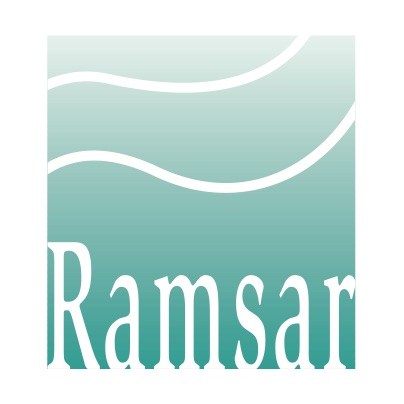
- BRIDGE BUILDER EXPEDITIONS SPITSBERGEN
- Research in Svalbard (RIS)
- RIS-ID 10275 (Bridge Builder Expeditions Spitsbergen)
- RIS-ID 11055 (Field Station Research Projects)
- The Norwegian Polar Institute's topographical Svalbard map portal
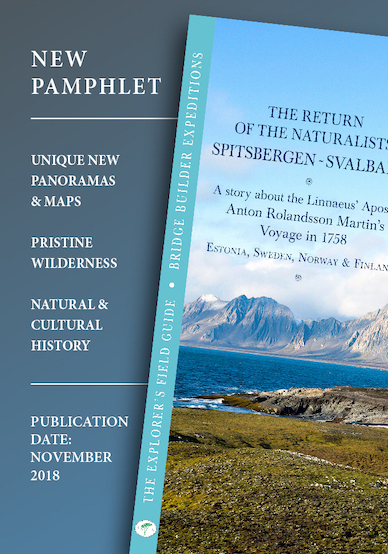

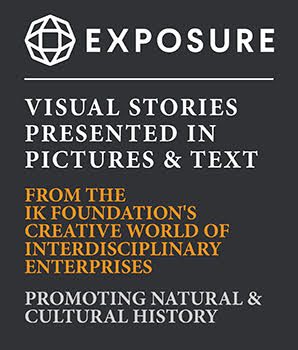
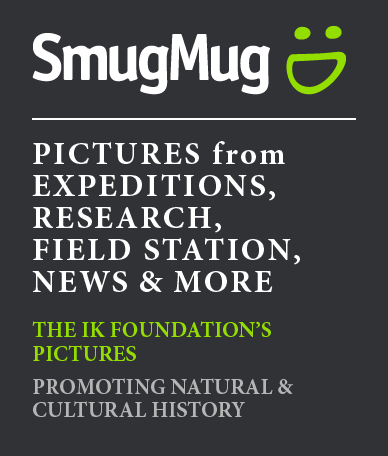
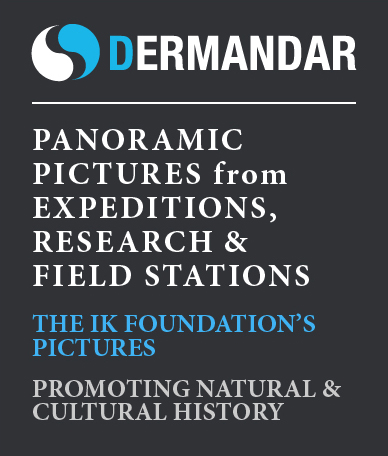

PROJECT GOVERNING
Lars Hansen | The IK FoundationArne Ardeberg | The IK Foundation
PRINCIPAL REFERENCES & RESOURCES
• The IK Foundation Mission Control Centre | Lars Hansen, Jeff Snoxell, Graham Scott • The Governor of Svalbard | Paul Lutnæs, Morten Wedege • LMK-stiftelsen | Foundation for Interdisciplinary Scientific Research | Malin Ferhm • Research & Reception Desk Office at The IK Foundation | Arne Ardeberg, Jennie Asher, Viveka Hansen, Leo RyderSee also LIST OF PARTICIPATORS
Updated/Checked 09/02/2023
THE IK FOUNDATION & COMPANY PROMOTING NATURAL & CULTURAL HISTORY
SUBSCRIBE TO OUR NEWSLETTER
TRANSLATE PAGE
A link to this page has
been copied to your clipboard
SHARE @been copied to your clipboard




© The IK Foundation & Company 2025
– a truly European organisation since 1988
– a truly European organisation since 1988
Legal issues | Forget me | and much more...
Home > Field Station | Naturae Observatio > Thermography & Infrared-Light


 FIELD STATION OVERVIEW
FIELD STATION OVERVIEW




